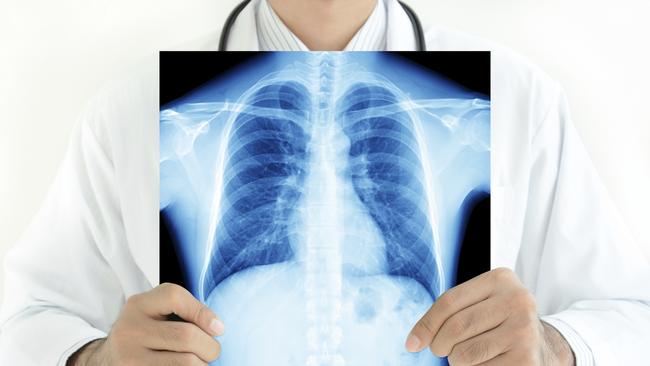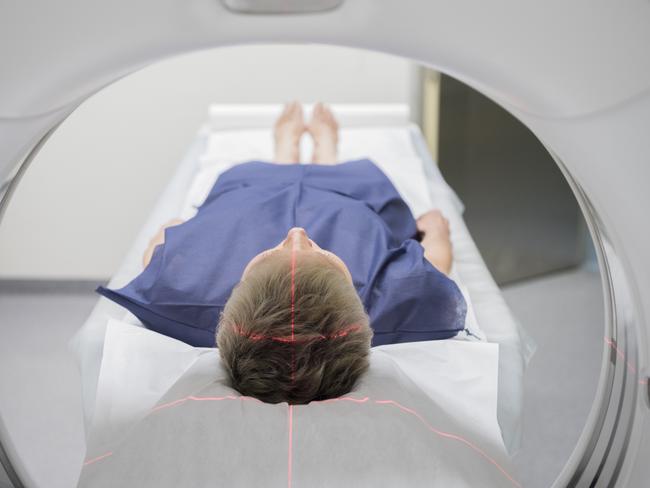X-rays and doctor visits to cost less as government prepares to lift the Medicare rebate freeze
MEDICARE rebates to rise for X-rays, scans and doctor visits in the Budget as Government seeks voter support by reversing Medicare cuts.

National
Don't miss out on the headlines from National. Followed categories will be added to My News.
EXCLUSIVE
X-RAYS and scans could become cheaper for patients in the May budget with the Turnbull Government under pressure to honour an election promise to raise the Medicare rebate for the tests.
However, the move could affect patients’ access to after hours in home medical care with cutbacks in this area under consideration to pay for the change.
An increase in rebates for scans will cost almost $600 million over four years and increase the amount patients get back from Medicare when they have an x-ray by between $1.50 and $2.
While these amounts are not large the key effect of the change will be to help practices continue bulk billing low income patients.
Almost one in four patients who have a scan or x-ray are not bulk billed for the service and the average gap payment is around $100.

Former Health Minister Sussan Ley made the rebate pledge in June last year to head off a damaging election eve advertising campaign by radiologists.
They were unhappy at government cuts that slashed Medicare bulk billing incentives for X-rays and scans and complained their rebates had not been indexed for inflation for 18 years.
“The Coalition will ensure that diagnostic imaging indexation resumes when the current GP rebate indexation freeze concludes,” she pledged in a statement in June.
Australian Diagnostic Imaging Association chief Pattie Beerens said the industry was keen to see the promise honoured.
“That is something we are hoping for and working towards,” Ms Beerens said.
The Abbott/Turnbull Government froze Medicare rebates for GP visits at 2014 levels for six years and rebates are not due to be indexed for inflation until 2020.
News Corp Australia has reported that many medical practices stopped bulk billing patients, including pensioners, in response to the freeze.
The Department of Health last year revealed per patient bulk billing data for the first time last year and it showed only 64.7 per cent of patients had all their GP visits bulk billed.
This compares with the 85.4 per cent bulk billing rate used by the government.

The Medicare freeze became a key election issue that almost cost the Coalition government in 2016 and Health Minister Greg Hunt is understood to be working to end it in the May budget.
The government is keen to make a show of support for Medicare after it got into political strife for proposing a $7 GP co-payment and made other cuts to the national health insurance scheme.
A spokesman for the Minister said the Turnbull Government “has a rock solid commitment to Medicare and we are committed to affordable access to frontline diagnostic imaging services for all Australians”.
“We are working constructively with a range of sectors within the medical profession, including the diagnostic imaging sector, on long-term reforms that will boost bulk billing and reduce pressure on patient costs,” he said.
“We won’t pre-empt possible budget announcements,” he said.
Consumer’s Health Forum chief Leanne Wells, said “the freeze should come off radiology rebates to ensure as many services as possible can continue to be bulk billed.”
“However we also believe measures are needed to reduce unnecessary scans which can be prescribed by GPs, sometimes at the behest of patients, when there is no real medical need for such scans,” she said.
Ending the freeze could cost the government almost $3 billion.
To pay for it doctors groups are negotiating other changes to Medicare.
These include an end to public hospitals cajoling privately insured patients to use their private health insurance in public hospitals, this practice pushes up health fund premiums which are subsidised by the Federal Government.
There are also moves afoot to clamp down on new after hours doctors who come to patients homes.
They have been accused of charging Medicare for “urgent” after hours care when in fact they are treating viruses and minor ailments and should be receiving a much lower Medicare rebate.
This could make their business model unviable.
Royal Australian College of General Practitioners’ president Dr Bastian Seidel has suggested reducing hospital admissions by six per cent and managing more patients in general practice as a way of saving $4 billion.
He wants an independent Medicare authority to review all Medicare items and settle on adequate rebates for each service provided by doctors.
“There are savings to be made and we have to make sure that funds actually go where patients really need them,” he told the National Press Club recently.
Radiologists have also offered the government $50 million worth of savings in their area including reducing the need for repeat scans and ensuring referrals for scans are appropriate.
Originally published as X-rays and doctor visits to cost less as government prepares to lift the Medicare rebate freeze


